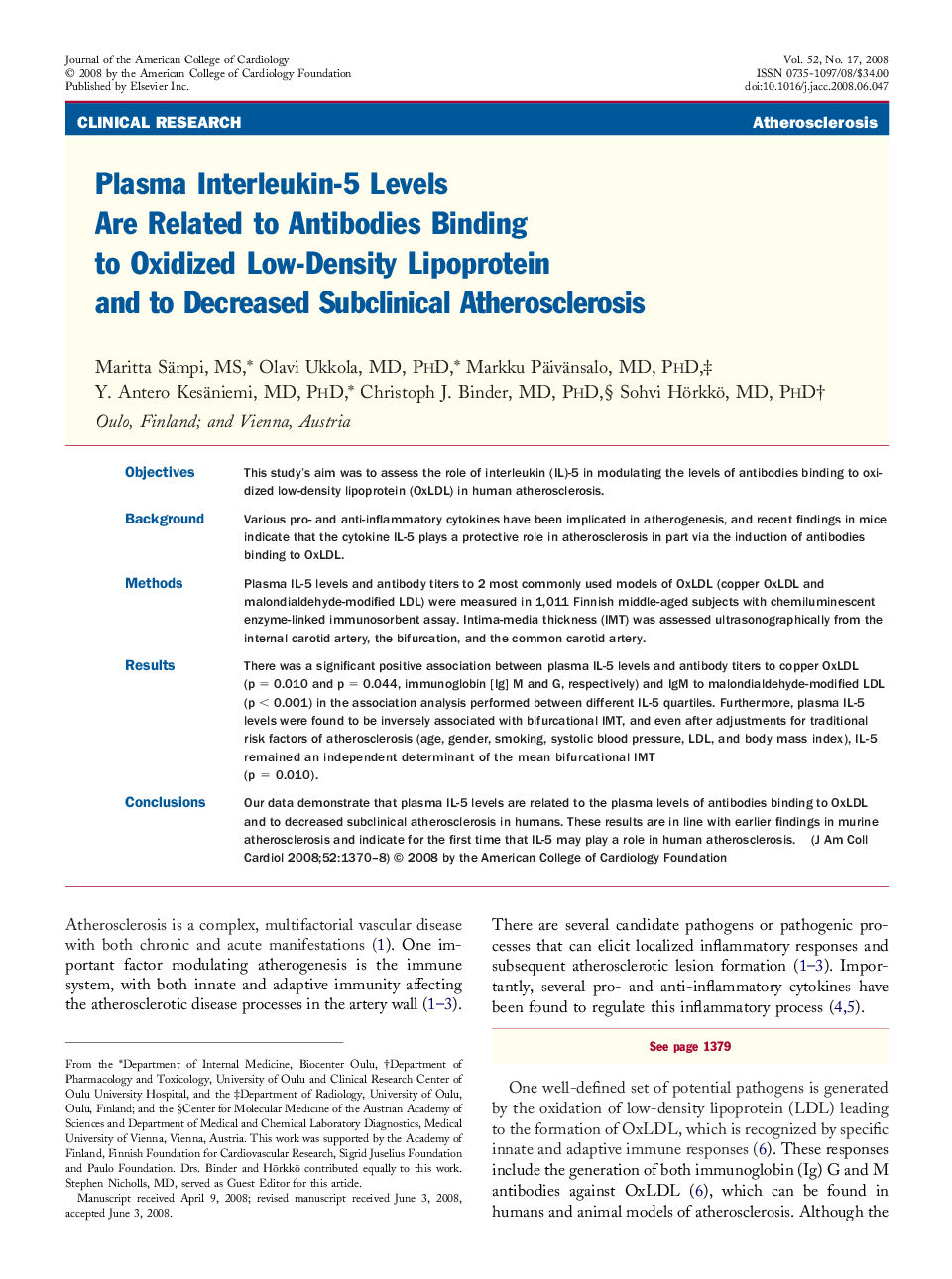| Article ID | Journal | Published Year | Pages | File Type |
|---|---|---|---|---|
| 2953190 | Journal of the American College of Cardiology | 2008 | 9 Pages |
ObjectivesThis study's aim was to assess the role of interleukin (IL)-5 in modulating the levels of antibodies binding to oxidized low-density lipoprotein (OxLDL) in human atherosclerosis.BackgroundVarious pro- and anti-inflammatory cytokines have been implicated in atherogenesis, and recent findings in mice indicate that the cytokine IL-5 plays a protective role in atherosclerosis in part via the induction of antibodies binding to OxLDL.MethodsPlasma IL-5 levels and antibody titers to 2 most commonly used models of OxLDL (copper OxLDL and malondialdehyde-modified LDL) were measured in 1,011 Finnish middle-aged subjects with chemiluminescent enzyme-linked immunosorbent assay. Intima-media thickness (IMT) was assessed ultrasonographically from the internal carotid artery, the bifurcation, and the common carotid artery.ResultsThere was a significant positive association between plasma IL-5 levels and antibody titers to copper OxLDL (p = 0.010 and p = 0.044, immunoglobin [Ig] M and G, respectively) and IgM to malondialdehyde-modified LDL (p < 0.001) in the association analysis performed between different IL-5 quartiles. Furthermore, plasma IL-5 levels were found to be inversely associated with bifurcational IMT, and even after adjustments for traditional risk factors of atherosclerosis (age, gender, smoking, systolic blood pressure, LDL, and body mass index), IL-5 remained an independent determinant of the mean bifurcational IMT (p = 0.010).ConclusionsOur data demonstrate that plasma IL-5 levels are related to the plasma levels of antibodies binding to OxLDL and to decreased subclinical atherosclerosis in humans. These results are in line with earlier findings in murine atherosclerosis and indicate for the first time that IL-5 may play a role in human atherosclerosis.
